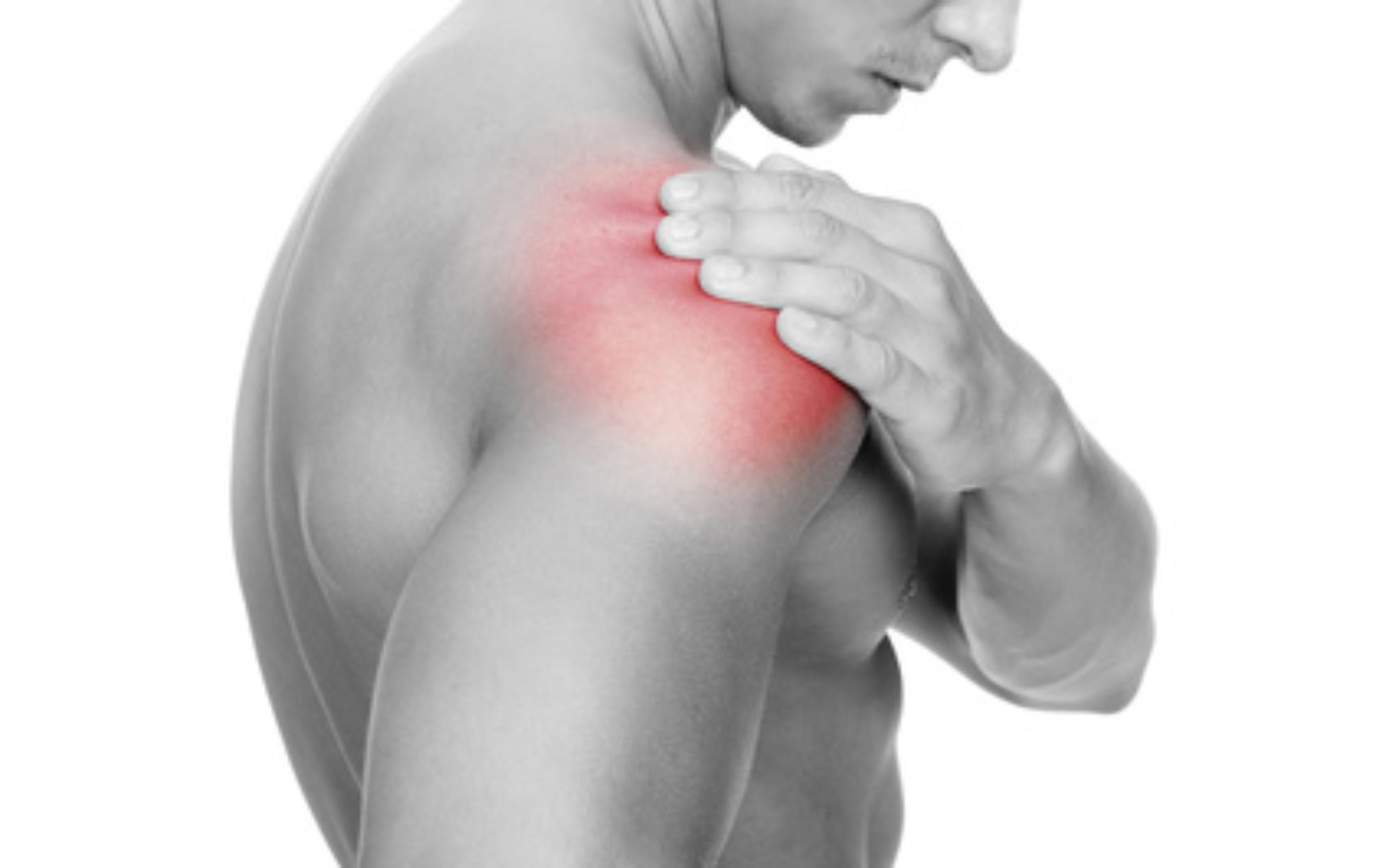Shoulder pain is a common complaint in general practice. The unique anatomy and range of motion of the glenohumeral joint can present a diagnostic challenge, but a proper clinical evaluation usually discloses the cause of the pain.
Anatomy
The shoulder is composed of the humerus, glenoid, scapula, acromion, clavicle and surrounding soft tissue structures. The shoulder region includes the glenohumeral joint, the acromioclavicular joint, the sternoclavicular joint and the scapulothoracic articulation (Figure 1a). The glenohumeral joint capsule consists of a fibrous capsule, ligaments and the glenoid labrum. Because of its lack of bony stability, the glenohumeral joint is the most commonly dislocated major joint in the body. Glenohumeral stability is due to a combination of ligamentous and capsular constraints, surrounding musculature and the glenoid labrum. Static joint stability is provided by the joint surfaces and the capsulolabral complex, and dynamic stability by the rotator cuff muscles and the scapular rotators (trapezius, serratus anterior, rhomboids and levator scapulae).

FIGURE 1A.
Anatomy of the shoulder girdle.
The rotator cuff is composed of four muscles: the supraspinatus, infraspinatus, teres minor and subscapularis (Figure 1b). The subscapularis facilitates internal rotation, and the infraspinatus and teres minor muscles assist in external rotation. The rotator cuff muscles depress the humeral head against the glenoid. With a poorly functioning (torn) rotator cuff, the humeral head can migrate upward within the joint because of an opposed action of the deltoid muscle.

FIGURE 1B.
The muscles of the rotator cuff.
Scapular stability collectively involves the trapezius, serratus anterior and rhomboid muscles. The levator scapular and upper trapezius muscles support posture; the trapezius and the serratus anterior muscles help rotate the scapula upward, and the trapezius and the rhomboids aid scapular retraction.
History
A complete history begins with the patient’s age, dominant hand and sport or work activity. It is important to assess whether the injury prevents or hampers normal work activities, hobbies and sports. The patient should be asked about shoulder pain, instability, stiffness, locking, catching and swelling. Stiffness or loss of motion may be the major symptom in patients with adhesive capsulitis (frozen shoulder), dislocation or glenohumeral joint arthritis. Pain with throwing (such as pitching a baseball) suggests anterior glenohumeral instability. Patients who complain of generalized joint laxity often have multidirectional glenohumeral instability.
Distinguishing between an acute and a chronic problem is diagnostically helpful (Table 1). For example, a history of acute trauma to the shoulder with the arm abducted and externally rotated strongly suggests shoulder subluxation or dislocation and possible glenoid labral injury. In contrast, chronic pain and loss of passive range of motion suggest frozen shoulder or tears of the rotator cuff.
TABLE 1
Key Findings in the History and Physical Examination
| FINDING | PROBABLE DIAGNOSIS |
|---|---|
|
Scapular winging, trauma, recent viral illness |
Serratus anterior or trapezius dysfunction |
|
Seizure and inability to passively or actively rotate affected arm externally |
Posterior shoulder dislocation |
|
Supraspinatus/infraspinatus wasting |
Rotator cuff tear; suprascapular nerve entrapment |
|
Pain radiating below elbow; decreased cervical range of motion |
Cervical disc disease |
|
Shoulder pain in throwing athletes; anterior glenohumeral joint pain and impingement |
Glenohumeral joint instability |
|
Pain or “clunking” sound with overhead motion |
Labral disorder |
|
Nighttime shoulder pain |
Impingement |
|
Generalized ligamentous laxity |
Multidirectional instability |
Once the location, quality, radiation, and aggravating and relieving factors of the shoulder pain have been established, the possibility of referred pain should be excluded. Neck pain and pain that radiates below the elbow are often subtle signs of a cervical spine disorder that is mistaken for a shoulder problem.
The patient should be asked about paresthesias and muscle weakness. Pneumonia, cardiac ischemia and peptic ulcer disease can present with shoulder pain. A history of malignancy raises the possibility of metastatic disease. The patient should be asked about previous corticosteroid injections, particularly in the setting of osteopenia or rotator cuff tendon atrophy.
Adapted with permission from https://shoulderdoc.co.uk

